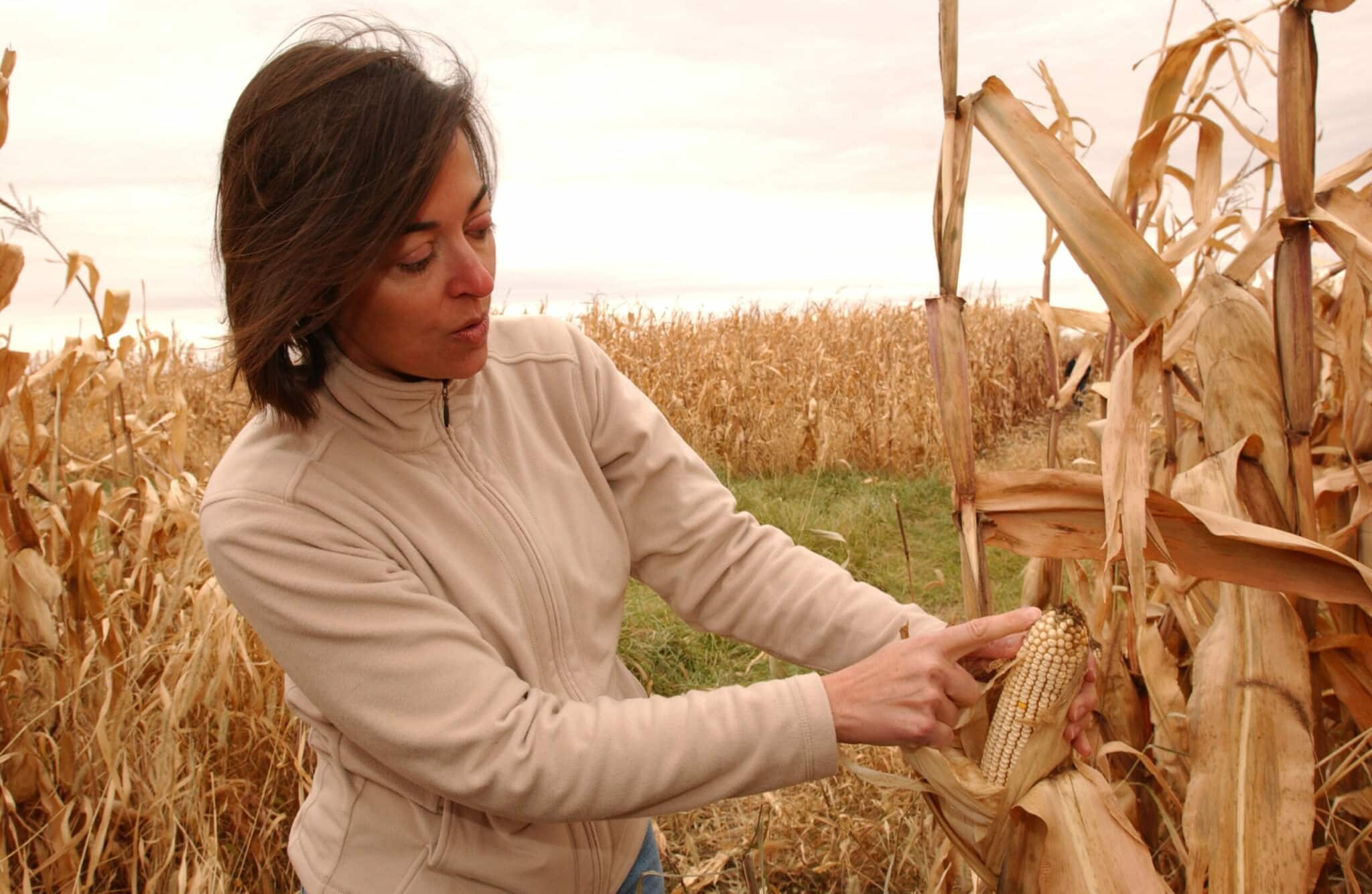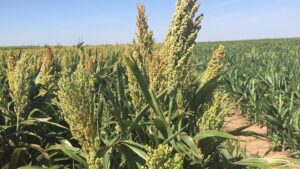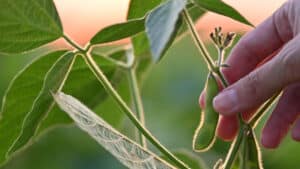2020 seed supplies called adequate.
The 2019 growing season in the United States for major crops, such as corn and soybeans, was widely described as disastrous because of unpredictable weather and disease pressures.
The excessive rain and subsequent spring flooding in the Midwest and elsewhere sent seed companies scrambling to find suitably dry planting ground that would mitigate the potential for harm to seed crops intended for planting in 2020.
“Late planting due to cold and wet conditions during the spring of 2019 shortened the growth cycle for major crops,” says Susana Goggi, seed specialist and associate professor at Iowa State University. “A shorter growth cycle reduces seed yield.”
How bad was it? The Illinois Emergency Management Agency determined the flooding was the state’s worst in more than 25 years. The conditions caused delays in the planting of spring crops, including corn and soybeans. In August, the U.S. Department of Agriculture (USDA) declared an agriculture disaster in the state.
Other areas of the Midwest, South, Southeast, and North faced similar weather-related challenges to seed production.
Corn Tested by Tough Planting Conditions
“The foremost challenge to seed production in 2019 was the wet spring,” says Ryan White, head of North American Seed Production and Supply Chain for Syngenta. “Planting corn really tested the creativity of our production agronomists and our seed growing partners. When we reached summer, we had a pretty good season overall with cooler temperatures that aided good pollination. In general, we met or exceeded our target yields in most cases.
“When we got to harvest, we had to, unfortunately, relive a little bit of the spring with wet conditions hampering harvest activities,” White says. “Just like commercial growers who were still harvesting corn in late November, we were finally happy to have the harvest in the shed and put this challenging growing season behind us.
“More so in 2019 than in the previous three years, Syngenta seed production occurred primarily west of the Mississippi River,” he says. “We were able to plant early there and harvest in a timely manner. The challenges of seed production in Illinois, southern Michigan and northern Indiana really impacted the seed industry. But the industry, just like Syngenta, was able to spread production around to ensure reliability of supply.”
“Producing seed was challenging in 2019,” says Carl Peterson of Peterson Farm Seeds. “We were able to hit our corn production targets of volume and quality by having the flexibility to move production to drier ground.”
Peterson says South Dakota was wetter than more northern areas. While not much corn is planted in North Dakota, Peterson Farm Seeds was able to use seed corn acreages wherever they could be found.
Syngenta reports that corn yields were diminished in 2019 by diseases that found wet conditions to be of their liking. The company states Tar Spot became a bigger threat this season with increased severity and movement into new states such as Minnesota.
Northern corn leaf blight caused damage to many fields. Syngenta says the pathogen that causes the disease overwinters in soil and crop residue, and will likely reemerge next season. Gray leaf spot was also a yield-robbing thief that has become very common in parts of the Midwest.
According to Goggi, another problem faced by seed producers in 2019 were the very hot and dry conditions during pollination, which kills pollen and also reduces yield.
“This problem also can potentially increase the risk of outcrossing because the male and female plants do not flower in synchrony,” Goggi says.
The relatively cool summer in corn country provided fewer heat units or growing degree days (GDD) accumulated, slowing plant development and maturation and reducing seed yield, Goggi says. The cool summer was followed by a cool and wet fall that delayed harvest and allowed more time for field pathogens to interact with the seed.
Goggi adds that an early frost was very detrimental to seed quality due to the high moisture content of the seed.
An early snowstorm across the northern reaches of the Corn Belt disrupted the harvest, increasing the chances for damage to seed.
“The poor planting, growing and harvesting conditions will likely result in shortages of some cultivars,” Goggi says. “Usually, seed companies try to minimize risk by producing the same cultivar in many different locations within the area of adaptation. Hopefully, by spreading risk, the companies minimize the effect of inclement weather.”
Soybean Harvest Delayed
The theme of a wet spring carried over into soybean production in 2019.
“We get a little more forgiveness with soybeans with a longer planting window to try to get optimal yield,” says White. “We had relatively good planting and growing conditions throughout the Midwest. However, when we got to the fall harvest, this was the first time in my 23 years of experience that we had to work with 30-inches of snow on soybeans in North Dakota.”
White says a very unique situation occurred in Syngenta’s northern seed production.
“Surprisingly, after the snow melted, our seed growers were able to harvest soybeans with quality that was better than expected,” he says. “We saw a little more brown stem rot this year but in general, yields were better than the conservative estimates we had made in the spring.”
Todd Steinacher, AgriGold Regional agronomist and agronomic coordinator for the Illinois Soybean Association, says soybean production faced the same challenges that other crop fields faced in 2019.
“It was challenging to get the crop planted and hopefully maintain quality growing conditions,” he says. “Seed companies were able to geographically space their production so some areas were able to be planted. Seed companies do not, generally, put all of their eggs in one basket.”
Steinacher says soybean production fields were vulnerable to pests in 2019. Because of the heavy spring rains, weeds were a major problem. He said sudden death syndrome was not as bad this year as it was in 2018. Other production challenges included frogeye, white mold, stinkbugs and bean leaf beetles.
Even though soybean planting was late, both soybeans and corn were able to take advantage of 2019’s long grain fill period.
“In general, our soybean supplies are solid for 2020 planting,” says White. “There is always that one variety that we wished we had produced more of. Soybean producers are taking a stronger look at the trait platforms that are available to them such as E3, GTLL, or Liberty Link products. Seeing customers broaden their adoption of these new herbicide trait technologies for weed control, and working with them to make those decisions, is bringing us closer to the customer.”
Rice Supplies Adequate
Mike Gumina, chief executive officer of RiceTec in Alvin, Texas, says 2019 rice planting was difficult due to heavy rains.
“We were able to plant most of our seed crop in a timely fashion,” he says. “Harvest conditions were about normal so most of the crop was harvested in good condition.”
Gumina says the top problem in hybrid rice production is kernel smut.
“RiceTec had good success controlling this pest and other fungi in 2019 with improved cultural practices and some new fungicide options that have become available,” he says.
However, there is an adequate supply of high quality seed for planting in 2020.
“As is normal, there is a tight supply of our newest, high-yielding products. But in general, there is enough high-quality seed to meet grower demand,” Gumina says. “We do not anticipate any seed shortages at RiceTec with the possible exception of an older hybrid that is used for organic production. That supply is quite tight but currently estimated at slightly more than demand.”
Wheat Quality Put to the Test
Again, the weather is taking the blame for reduced U.S. and Canadian wheat production in 2019. The USDA reported in November, based on expected planted area of 45 million acres in 2020/2021, seed use for 2019-20 was reduced seven million bushels to 61 million. The agency says that significant late season precipitation, including deep snow and freezing temperatures in the Northern Plains halted harvest in a number of spring and durum wheat-producing states.
“As we went through the summer in the United States and Canada, the wet season really had our grower partners sorting through a range of qualities,” says White. “We are generally in good shape seed-wise but conditioning and cleaning processes were critical to making sure we could deliver the best quality possible. We probably saw a few more discards than we have had in previous years.”
Sorghum Okay
With the majority of U.S. sorghum seed produced under irrigation in the Texas Panhandle, the miserable weather affecting crops in other areas of North America did not have a significant impact on sorghum seed production in 2019.
“Cold and wet conditions early caused sorghum growers some delay in planting,” says Brent Bean, director of Agronomy for the National Sorghum Checkoff. “But since most of the sorghum for seed is grown under irrigation, crops received adequate water.”
Bean says sorghum seed companies reported adequate seed production in 2019 and there are no anticipated shortages of seed for planting in 2020.
“Even though sorghum was late getting in, warm weather later in the season sped things up and most fields came out okay,” he says.
Bean adds that sugarcane aphids were the only pest that typically bothers sorghum but the yield-robber was efficiently managed through the use of insecticides.
In general, Bean says sorghum seed supplies for 2020 appear to be adequate. A number of new hybrids being released for 2020 are expected to be somewhat tighter in supply due to high grower demand for the latest traits and innovations.
Looking Ahead
The 2019 seed production seasons in the United States for most major crops was filled with adversities such as late spring planting, cool summer temperatures and wet harvest conditions, including snowfall measurable in feet rather inches in northern areas. In North Dakota and South Dakota, the August-October period was reported by USDA to be the wettest in 125 years.
Despite the challenges, the flexibility of seed companies to juggle acres around to drier areas helped moderate the affects of bad weather. Seed health is generally reported to be good across a variety of crops and seed availability for 2020 planting, with the exception of the latest seed releases, is anticipated to be very good.
However, with North American weather becoming ever more unpredictable, seed production in the new year will perhaps be more challenging than ever.











